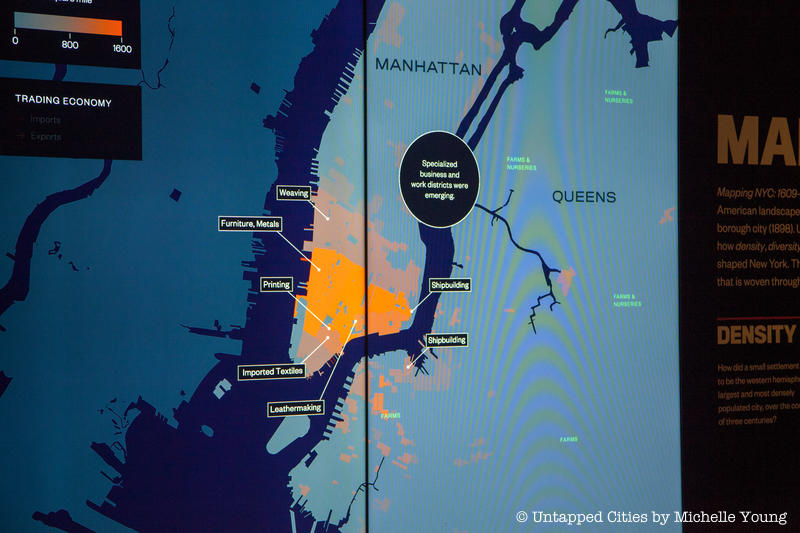4. Following the Money from 1609-1898

At the entrance of the gallery,”Port City: 1609 to 1898,” within New York at Its Core, one of maps series shows the evolution of New York City from trading outpost to commercial, manufacturing and financial giant. One specific map shows the trading routes under the Dutch West India Company – how fur, grain and leather were shipped to Europe in exchange for textiles, liquor and cattle. Enslaved Africans and sugar came from the West Indies, and the displays note that both the Dutch and the English economy relied on enslaved labor, with New York City as the largest slaveholding city in the northern colonies under the English.
By 1835, specialized manufacturing districts were emerging in New York City for printing, leathermaking, shipbuilding, weaving, furniture and meats:






